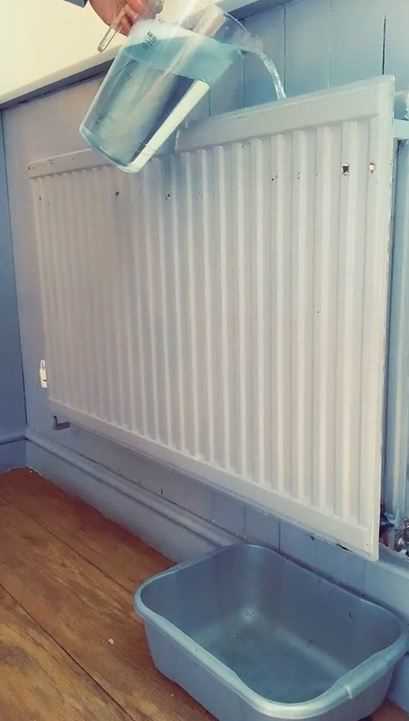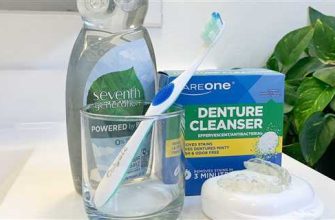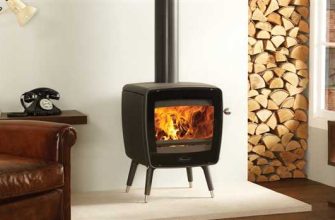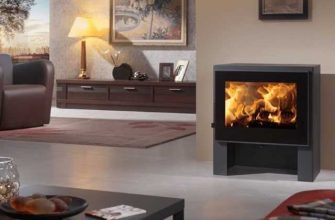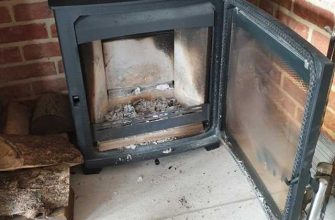
When it comes to keeping your home clean and dust-free, one area that is often overlooked is the radiator. Dust can quickly accumulate behind and between the heating panels, making it even more difficult to clean. But don’t worry, the experts are here to help!
Credit: Ramona Duggan
The first step in effectively cleaning your radiators is to turn off the central heating. This will prevent any potential accidents while you work. Next, grab a good cleaner, which can be a simple soapy solution or a specifically designed radiator cleaner that you can find on Amazon. You’ll also need a cloth or brush to wipe away the dust.
Start by wiping down the top of the radiator with a damp cloth or by using a vacuum with the appropriate attachment. Make sure to get into all the nooks and crannies to remove any dust that may have settled there. Work your way down, wiping the front and back of each panel until you’ve cleaned the entire radiator.
For those hard-to-reach spots, use a long-handled brush or an attachment for your vacuum to get between the panels. This will help to remove any dust that you may have missed with your initial cleaning. Additionally, if your radiator has skirting boards, check under them as dust can accumulate in these areas as well.
If you’re looking for an ideal cleaning solution that is safer for your indoor air quality, you can mix equal parts water and vinegar in a spray bottle. This natural cleaner is not only effective at removing dust but is also better for your health and the environment.
To give your radiators a final touch, wipe them down with a dry cloth to remove any remaining moisture. This will prevent any water spots from forming and keep your radiators looking good as new. Now you can turn the central heating back on and enjoy your clean, dust-free radiators!
Remember to regularly clean your radiators at least once a month to maintain their efficiency and keep your home dust-free. By following these expert tips and tricks, you’ll be able to effectively clean dust from your radiators and ensure they work at their best.
Sign up for our weekly newsletter to get more expert tips on home cleaning and makeovers. With the majority of your time spent indoors, it’s important to keep your living spaces clean and healthy. Don’t let dust and dirt get the best of you, start cleaning those radiators today!
- Why Cleaning Dust from Your Radiators is Important
- 1. Efficient Heating Solution
- 2. Improved Indoor Air Quality
- 3. Energy Savings
- 4. Prevention of Fire Hazards
- 5. Extend the Lifespan of Radiators
- Improve Heating Efficiency
- Prevent Potential Fire Hazards
- Reduce Allergens and Improve Air Quality
- How to Effectively Clean Dust from Your Radiators
- 1. Turn off the heating
- 2. Wipe down the radiators
- 3. Use a vacuum cleaner
- 4. Bust the dust with brushes
- 5. Clean with soapy water
- 6. Wipe down radiator boards and skirting
- 7. Check for any signs of leaks or damage
- 8. Final dust-free wipe
- Conclusion
- Gather the Necessary Supplies
- Bust Out a Radiator Brush for Deep Cleaning
- Video:
- 12 MIND-BLOWING Cleaning Tips from PROFESSIONAL HOUSEKEEPERS!
Why Cleaning Dust from Your Radiators is Important
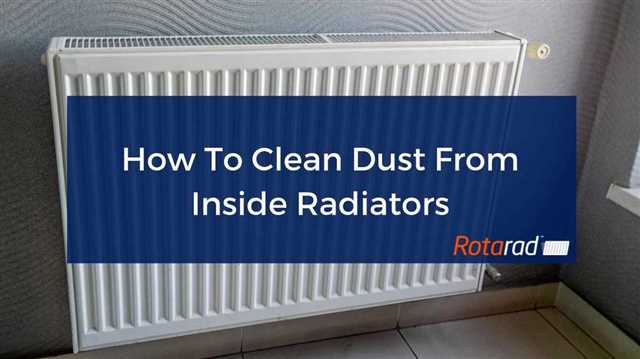
Keeping your radiators clean and free from dust is essential for several reasons. Let’s explore why cleaning dust from your radiators is important and how you can do it efficiently.
1. Efficient Heating Solution
Clean radiators can efficiently distribute heat throughout your home, ensuring that every room stays warm and comfortable. When dust accumulates on the radiator fins, it hampers the airflow, making your heating system work harder and less efficiently. By regularly cleaning your radiators, you can maximize the effectiveness of your heating solution.
2. Improved Indoor Air Quality
Dust particles trapped on your radiators can easily circulate in the air you breathe. This can lead to allergies, respiratory issues, and other health problems, particularly for those with asthma or sensitivities to dust. Regularly removing dust from your radiators helps to maintain a cleaner and healthier indoor environment.
3. Energy Savings
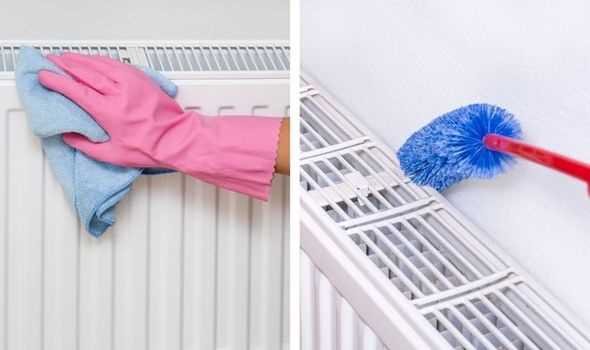
When dust accumulates on your radiators, it acts as an insulator, preventing heat from dissipating into the room effectively. As a result, you may find yourself turning up the heat to compensate for the reduced warmth. By keeping your radiators dust-free, you can optimize your heating system’s efficiency and potentially save on energy costs.
4. Prevention of Fire Hazards
Dust is highly combustible, and when it collects on or near heat sources, it can increase the risk of fire. Cleaning the dust from your radiators can help eliminate this potential fire hazard and keep your home safer.
5. Extend the Lifespan of Radiators
Regular maintenance and cleaning can help prolong the lifespan of your radiators. Dust buildup can corrode the radiator fins, decrease their efficiency, and lead to costly repairs or replacements. By keeping your radiators clean, you can prevent damage and ensure they function optimally for years to come.
In conclusion, cleaning dust from your radiators is not only essential for maintaining a dust-free and healthier home but also for ensuring efficient heating, saving energy, and preventing fire hazards. By following expert tips and regularly cleaning your radiators, you can enjoy a safer, more comfortable, and cost-effective heating system.
Improve Heating Efficiency
One of the main benefits of cleaning the dust from your radiators is that it can greatly improve the efficiency of your heating system. When dust accumulates on the surfaces of the radiator, it acts as an insulating layer that prevents the heat from being efficiently transferred into the room. By regularly cleaning your radiators, you can ensure that they are able to radiate heat more effectively, keeping your home warm and comfortable.
To improve the heating efficiency of your radiators, here are some expert tips and tricks:
- 1. Remove furniture and carpets: Before cleaning your radiators, it is important to clear the surrounding area. Move any furniture, such as couches or tables, away from the radiator to give yourself enough space to work. If you have carpets or rugs near the radiator, roll them up or move them to another area. This will prevent dust and debris from getting onto the flooring while you clean.
- 2. Wipe down the radiators: Start by using a dry cloth to wipe away any loose dust and debris from the surface of the radiator. Pay special attention to the top and sides of the radiator, as these areas are often overlooked and can accumulate a lot of dust. Use a damp cloth to wipe away any stubborn spots or dirt.
- 3. Clean behind the radiators: It’s common for dust and sludge to build up behind the radiators, especially if there is a gap between the radiator and the skirting boards. Use a long-handled brush or a vacuum cleaner with a brush attachment to reach behind the radiator and remove any accumulated dust and debris.
- 4. Use a radiator cleaning solution: If your radiators have become heavily soiled or covered in sludge, you may need to use a specific radiator cleaning solution. These solutions are designed to break down sludge and dirt, allowing you to easily clean the radiator and improve its efficiency. You can find radiator cleaning solutions at most home improvement stores or online retailers like Amazon.
In conclusion, regularly cleaning the dust from your radiators is essential for maintaining their efficiency and keeping your home warm. By following these tips and tricks from experts like Duggan Heating, you can ensure that your radiators are dust-free, allowing them to efficiently heat your home and potentially reduce your heating bills. Don’t forget to regularly clean your radiators to keep them in good working condition and to share these tips with others to help them improve their heating efficiency as well.
Prevent Potential Fire Hazards
To ensure the safety of your home and prevent potential fire hazards, it is important to keep your radiators free from dust and debris. Dust, when it accumulates on the surface of your radiators, can become a fire hazard and reduce the efficiency of your heating system. Here are some expert tips and tricks to help you effectively clean the dust from your radiators:
-
Turn off your central heating: Before you start cleaning your radiators, turn off your central heating system to prevent any accidents or injuries.
-
Get the right tools: Invest in good quality radiator cleaning attachments, brushes, and vacuum cleaners. These tools will help you reach the difficult spots and efficiently remove dust and debris.
-
Brush away the dust: Start by using a soft, dry brush to gently brush away the loose dust from the surface of your radiators. Be sure to check all the areas, including the spaces between the panels and behind the radiator.
-
Vacuum the dust: Use a vacuum cleaner with a brush attachment to suck up any remaining dust from your radiators. Pay special attention to the bottom and the areas where dust tends to accumulate.
-
Wipe the radiators: Take a warm, damp cloth and wipe down the radiator surfaces to remove any remaining dust or sludge. Be sure to wipe thoroughly and get into all the nooks and crannies.
By properly cleaning your radiators, you can ensure that they work efficiently and prevent potential fire hazards. Regular cleaning will also help extend the lifespan of your heating system and keep your indoor environment dust-free. Remember to check your radiators at least once a year and clean them as needed.
Reduce Allergens and Improve Air Quality
If you want to reduce allergens and improve the air quality in your home, it’s important to keep your radiators clean and dust-free. Dust and other airborne particles can easily become trapped in the fins and crevices of your radiator, which can lead to poor indoor air quality and potential health issues. Follow these expert tips to effectively clean your radiators and improve the air in your home.
- Start by turning off the central heating: Before you begin cleaning your radiators, make sure to turn off the central heating system. This is important for your safety and to prevent any potential accidents or injuries.
- Remove dust from the radiator fins: Use a soft brush or vacuum cleaner with a brush attachment to gently remove dust from the radiator fins. Be careful not to use any abrasive materials or brushes that could damage the fins.
- Pour water between the radiator fins: To clean away any remaining dust or dirt, pour water between the radiator fins. This will help to wash away the dust and leave your radiator looking cleaner and more efficient.
- Check for any sludge or buildup: To ensure that your radiator is functioning properly, check for any sludge or buildup at the bottom. If you notice any, you may need to use a radiator cleaner to remove it.
- Wipe down the radiator: After you’ve completed the cleaning process, give the radiator a good wipe down to remove any excess water or cleaner. This will help to keep it looking clean and prevent any damage to your flooring or skirting boards.
By following these expert tips and tricks, you can effectively clean your radiators and reduce allergens in your home. This will not only help to improve the air quality, but also keep your radiators running more efficiently and potentially reduce your energy bills.
In conclusion, regular maintenance and cleaning of your radiators is essential to reduce allergens, improve air quality, and keep your home looking and feeling clean. By taking the time to clean your radiators properly, you can ensure they stay in good working condition and provide warmth throughout the colder months.
How to Effectively Clean Dust from Your Radiators
Dust can accumulate on radiators over time, causing them to become less efficient and potentially increasing heating bills. To keep your radiators working their best, it’s important to regularly clean them and remove any dust or debris. Here are some expert tips and tricks to effectively clean dust from your radiators:
1. Turn off the heating
Before you start cleaning your radiators, turn off the central heating system to ensure your safety.
2. Wipe down the radiators

Using a damp cloth, wipe down the radiators from top to bottom to remove any loose dust or dirt.
3. Use a vacuum cleaner
To effectively clean hard-to-reach areas and collect dust that you may have missed with a cloth, use a vacuum cleaner with the appropriate attachments. Use the brush attachments to gently clean around the radiator panels and the crevice tool to reach behind the radiator.
4. Bust the dust with brushes
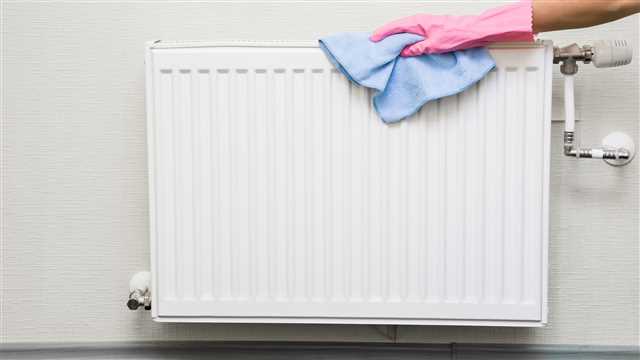
If you notice any stubborn dust spots or sludge on the radiators, use brushes to scrub away the dirt. Make sure to use a soft brush to avoid damaging the radiator surface.
5. Clean with soapy water
If your radiators have spots or are particularly dirty, you can use soapy water to clean them. Mix a small amount of mild soap with warm water, dampen a cloth or sponge, and gently wipe the radiator panels.
6. Wipe down radiator boards and skirting
Don’t forget to wipe down the radiator boards and skirting around the radiators, as these areas can also accumulate dust and dirt.
7. Check for any signs of leaks or damage
While cleaning your radiators, take the opportunity to check for any signs of leaks or damage. If you notice any issues, it’s best to contact a professional for repairs.
8. Final dust-free wipe
After cleaning your radiators, give them a final wipe down with a dry cloth to ensure they’re dust-free and ready to efficiently heat your home.
Conclusion
Cleaning dust from your radiators is an important task that can help keep your heating system running efficiently and reduce energy bills. By following these tips and tricks, you can effectively remove dust and debris from your radiators, ensuring they’re in top condition.
Image credit: [Author Name]
Gather the Necessary Supplies
Before you start cleaning your radiators, it’s important to gather all the necessary supplies. Having these items on hand will help make the cleaning process more efficient and effective. Here are the supplies you’ll need:
- A soft cloth or microfiber cloth: Use this to wipe down the surface of the radiators. A cloth with a bit of texture can help to remove stubborn dust and dirt.
- A vacuum cleaner with attachments: Attachments like a brush or crevice tool can help you reach between the fins or panels of the radiator where dust tends to accumulate.
- A bucket of warm water: Warm water mixed with a small amount of mild soap or radiator cleaner can help to remove any grime or sludge that has built up on the radiator.
- A dusting brush or duster: These tools can help you remove dust from hard-to-reach areas, such as behind the radiator or on the skirting board below.
Once you have gathered all the necessary supplies, you’ll be ready to start cleaning your radiators and keeping them looking their best.
Bust Out a Radiator Brush for Deep Cleaning
If you want to keep your home’s heating system in good health and your radiators running optimally, it’s ideal to regularly clean them to remove any dust and dirt that can accumulate over time. One effective tool to use for this task is a radiator brush.
Radiators can collect dust and other debris in hard-to-reach areas, making it difficult to clean them properly. Using a radiator brush can help you reach these areas and remove the built-up dust and dirt. This will not only improve the appearance of your radiators but also ensure that they function efficiently.
When using a radiator brush, start by turning off your heating system to avoid any accidents. Then, take the brush and gently swipe it along the fins or panels of the radiator to remove the dust and dirt. Be sure to brush in all directions to ensure you’re getting all the hidden spots.
If you’re dealing with stubborn grime or sludge, you may need a cleaning solution to help loosen it. You can either purchase a specific radiator cleaner from a home improvement store or make your own solution using a mixture of warm water and mild soap. Pour the solution onto a cloth and use it to wipe down the radiator, paying extra attention to the areas with stuck-on dirt.
Experts recommend that you deep clean your radiators at least once a year, but it can be beneficial to do it more frequently, especially if you live in a dusty or high-traffic area. Regularly cleaning your radiators will not only make them look better but also help improve the air quality in your home.
Once you’ve spent some time busting out a radiator brush and giving your radiators a good cleaning, don’t forget to give them a final wipe down with a dry cloth to ensure there’s no moisture left behind. This will help keep them dust-free for longer and reduce the chances of mold or mildew growth.
In conclusion, a radiator brush is a valuable tool when it comes to effectively cleaning your radiators. Regular deep cleaning, along with the use of a brush, will help keep your radiators in good shape and your home warm and cozy. Don’t underestimate the impact a clean radiator can have on the overall comfort and air quality in your home.
